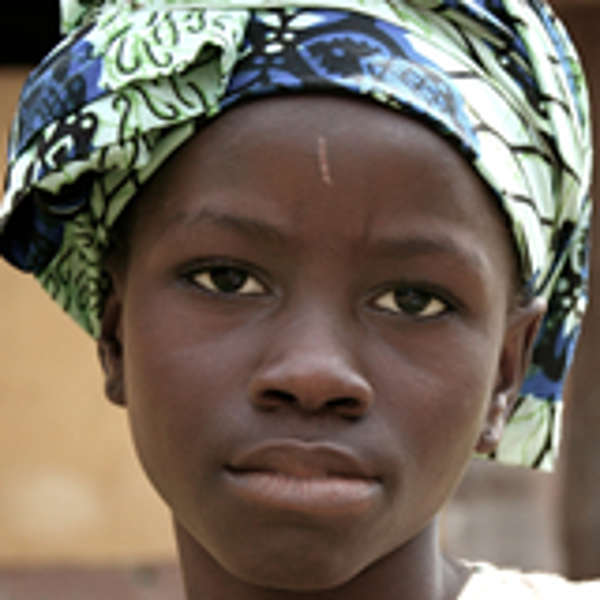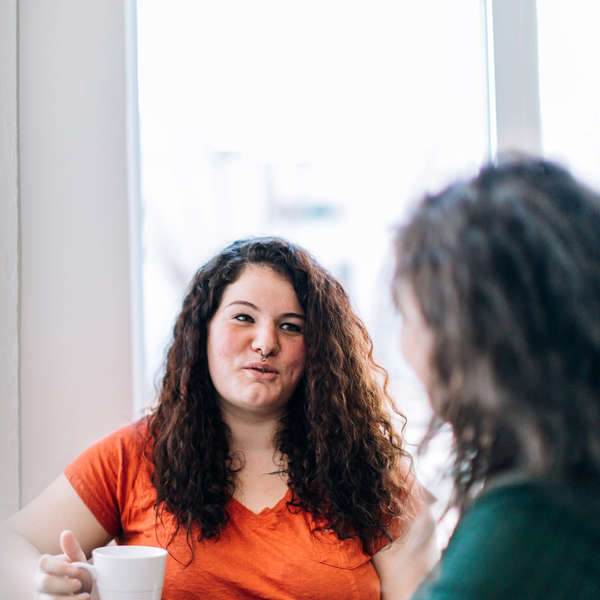I had so much hope
Interview with Megi Xhumari, Program Coordinator, Bethany Social Services Albania

What does it take to build something from nothing? Patience, grit, tenacity, and someone who will champion the cause. As Bethany worked to introduce foster care in Albania, every step forward seemed to require two steps back.
In 2016, Zamir* was a timid 2-year-old, living in a state-run residential care home in Albania. His mother had died, and his father’s disability made it impossible for him to care for Zamir and his older siblings alone. Zamir didn’t talk much in the care home, and the foster family he’d been matched with wondered if he might have delayed speech or other developmental issues.
It would be a full year before Zamir could leave the residential home to live with his foster family in a long-term placement. The cause for delay was simple, yet agonizingly complex: foster care didn’t exist in his country. His case languished in court as the judge, who was unfamiliar with foster care, needed time to identify proper legal procedures—this would be the first foster care case in Tirana court, setting the precedent for future foster care cases. Zamir’s foster parents battled frustration, fatigue, and doubt that the case could be won.
Megi Xhumari, program coordinator for Bethany in Albania, was there at every step, advocating for foster families instead of institutions. She continues the story about what can be achieved when even one person refuses to give up hope.
Hope for children
In 2010, I worked with a UNICEF project, moving children out of residential care to live with foster families or extended family members. However, the concept of foster care was so new that the only children we could successfully move out of an institution and into a family were those with relatives who could provide kinship care. But even this wasn’t always a viable option.
Poverty is the top reason children around the world live in institutions. So even when we could identify extended family members who wanted to help the child, often they could not afford to provide adequate care and therefore didn’t meet the required criteria to become kinship families through a court decree. The primary option in Albania at that time was state-run residential homes, which are not where children belong.
To give these children any hope of growing up in a family, we needed to find families who would open their homes to a child with no kinship ties and, in most cases, could care for that child long term.
In 2015, through another UNICEF project, Bethany began hosting community awareness events, talking to people about foster care. We spoke on TV and radio programs, used social media, distributed brochures, and visited churches and community organizations, hoping to identify families who might be interested in fostering. But most people didn’t know what foster care was.
Even professionals working in child welfare didn’t have enough information about foster care or the capacity to develop this new program. We needed them—maybe most of all—to see that family-based care was a better alternative for children than institutional care. We needed care home staff, psychologists, social workers, and judges to help us advocate, so we began training them about the benefits of family-based care.
Although the Ministry of Health and Social Protection, Municipality of Tirana, and State Social Services were collaborating with Bethany, we faced a barrier with existing laws that did not define how foster care would operate. We had to work within the limits of our legal system while continually clarifying terms, procedures, and accountability.
Hope that overcomes fear
As a result of our early awareness efforts, 40 families came forward, expressing interest in becoming foster families—but just four met the criteria. They continued on to complete PRIDE training (Parent Resources for Information, Development, and Education), a training program many states use with foster families in the U.S. While they completed training, we identified a few children for placement from Hannah and Rozafa House, a state residential home in Tirana, Albania’s capital city, for children ages 0–6.
Before we could match these children for foster placement, we needed approval from their biological parents, and these conversations weren’t easy. These parents knew nothing about foster care and were understandably afraid.
I met with one biological mother who could not afford to care for her child after her husband had died. She was scared that foster care was a form of adoption and that she’d lose custody of her child. Where she comes from, in Northern Albania, extended family members have strong influence on people’s decisions. She allowed me to speak with her sister, brother, and aunt about why foster care was truly better for her child than living in an institution. She agreed to let us find a foster family for her child, but only with her whole family’s approval.
Our next step was matching the four families that had completed training with children whose parents had given approval. In June of 2016, we sent the court documentation, forms, and assessments for three families—the fourth family was matched with a child whose parents were deceased. Working with limited understanding of foster care herself, the judge immediately closed two of the cases. We pushed back, emphasizing that growing up in a family is best for a child’s well-being and development.
One of the judges wanted to know why we would move a child out of a group home when “everything they need” was already there. She asked, “Wouldn’t introducing them to a new family cause the child more trauma?” Her skepticism during the court process created doubt in the child’s biological mother, and she decided not to allow her child to be placed with a foster family. We had to keep building our case that children belong in families, not institutions.
So we pressed on with one remaining family, not knowing the challenges that lay ahead. This case would be the first foster care case in Tirana, so the judge had no model to follow. She didn’t know what documents were needed, and she had many questions about how it would work. Who would monitor the placement? Did the municipality units have staff capacity to ensure the child’s safety through ongoing supervision? Some of the language in our existing laws wasn’t clear, so at times she wasn’t sure how to move forward. Over the next year, the judge moved cautiously yet deliberately, knowing this case would set precedent for other children to be placed in foster care. She carried the burden to get it right and not expose a child to undue risk.
Hope stronger than doubt
Meanwhile, our foster parents began visits with 2-year-old Zamir at Hannah and Rozafa House. We wanted them to begin building some familiarity and attachment to ease Zamir’s transition into their home. While the couple had some experience caring for children, they did not have biological children, so everything about foster parenting would be new to them.
After the foster family first expressed interest in December 2015, there was so much waiting. They waited through their assessment and training. They waited to be matched with a child (because we didn’t yet have children who could be matched). They waited a whole year while the court deliberated.
Every part of this process required patience and faith, and it was my job to make sure we didn’t lose hope. The foster family was tired, and they could tell the judge had doubts. They began to have doubts too. I wanted to believe that all would be well in the end, so I’d tell them, “We shouldn’t be the ones to give up. If we end it, we’ll always wonder about Zamir, still living in an institution.” This wasn’t an abstract case for any of us; we all knew the child whose future hung in the balance.
That didn’t mean I never had doubts about the court process. I was there for those hearings with the judge. I knew the questions she was asking, and I was scared she might not give the decree. Others, even professionals in the child welfare field, were skeptical. They’d ask, “Megi, why? You should quit.”
But stronger than my doubts, I had so much hope that we could do this, and we did.
We won the first foster care case in Albania, and in July of 2017, Zamir went to live with his foster family. That first successful case led to a second in December that year and then a third in Tirana, giving me even more hope and confidence. Now when I talk to people about foster care, it’s not a theory. I have real stories of Albanian children and families whose lives are changed. In Shkodra, a city north of Tirana, Bethany has also been working to develop a foster care system, and we’ve already placed three children in two foster families.
Hope for Albania
Today, 5-year-old Zamir is a different child than the one we first met at Hannah and Rozafa House. The shy and timid toddler is now a happy, social kindergartener who loves swimming, chatting with his neighbors, and going places with his foster family. Even before his placement—when he was just having regular visits with his foster parents—Zamir’s caregivers noticed a change in his communication skills, emotions, and behaviors. They could see the difference it made that he had a family spending time with him, giving him care, attention, and protection.
We still have a long road ahead before foster care is widely considered a better alternative to residential care. It took many years for adoption to be culturally accepted, and this will take time too. And funds. And resources. And patience. But I’ve seen how success builds upon success. I’ve seen the difference foster care makes for children.
Q&A with Megi Xhumari
What range of emotions did you experience while you waited for that first decree?
I felt so many emotions—hope, disappointment, sadness, anger. When I faced challenges, I wondered why things weren’t working. Why did it feel like I was the only one who believed?
In our first court process, we had a lawyer who’d never heard of foster care, and it was up to me—a social worker with no legal training—to explain how foster care works and what we were trying to achieve. We had people all around us who didn’t believe foster care was better than residential care. We had judges who needed training on the legal aspects of the foster care process and who were also skeptical of what we were fighting for.
After Zamir was placed with his foster family, I felt motivated, excited, hopeful, and happy. Knowing the difference foster care makes for children helps me celebrate small victories and makes me patient to wait for bigger victories to come.
Where is Zamir’s biological family today?
Zamir was 6 months old when his mother died, and he entered residential care. His father lives in a city three hours away from him; he’d visit Zamir when he could, but without a strong attachment, Zamir was afraid of him. Since Zamir entered foster care, we’ve been able to facilitate more visits and contact between Zamir, his father, and his siblings, and they are building a strong relationship.
Have you had any further contact with the judge who decided your case?
I saw the judge who gave Zamir’s placement decree at a training, and she told me she still thinks about that case, wondering if what she did was right. I told her, “Yes, you did right. Zamir is doing well; you have done such a wonderful thing in his life.”
Are any previously skeptical professionals now helping you advocate for foster care?
Some are, in different ways. When I hear them speak positively about foster care at meetings and trainings, that’s a way of advocating. Even if they’re not organizing big initiatives, it’s valuable that they’ll say foster care is needed within their professional networks. Before, they would have only expressed doubt. Now they have success stories they can talk about with confidence.
Where do you take this great big vision from here?
So much awareness work still needs to be done—among child welfare professionals and throughout Albania. Foster care needs to be an option in every city. Bethany has already trained child welfare professionals in Tirana and Shkodra, and we’ve expanded our training in four more cities—Durres, Saranda, Korca, and Vlora—through projects funded by the U.S. Embassy in Tirana and Save the Children Albania, extending our capacity throughout the country.
The message that family-based care is best for kids needs to be further emphasized from our government as well as our municipalities, our communities, our education system, our justice system, our health care system. We need an integrated initiative to deinstitutionalize children.
Institutions are no longer the only option for children who need care and should be considered the last alternative behind kinship care, foster care, or adoption.
What role does your faith play to keep you going?
As a Christian, I believe God has been with me and these children at every step in this process, bringing us through every challenge. I can trust Him to guide me and give me the courage, patience, and energy I need to keep believing we will succeed.
Megi Xhumari is a program coordinator at Bethany Social Services Albania. She holds a Master of Social Work and a post-master’s degree in advanced practice with children and adolescents from Springfield College in Massachusetts. In addition to her role at Bethany, she is an assistant professor at the University of Tirana in the social work department.
Visit Bethany.org/FosterAroundWorld to learn more about Bethany’s international foster care work.
*A pseudonym



